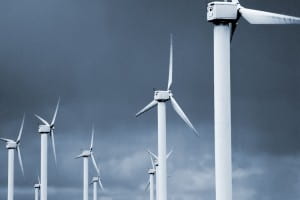 Here’s your opportunity to read and review for yourself carefully documented analysis that assesses the impact of climate change over periods up to the next century. After the open review period, during which the National Acadamies of Science and the general public will be able to review and provide comments on the contents of this 1,000 page document, the Third National Climate Assessment Report will be final and presented to the President and Congress.
Here’s your opportunity to read and review for yourself carefully documented analysis that assesses the impact of climate change over periods up to the next century. After the open review period, during which the National Acadamies of Science and the general public will be able to review and provide comments on the contents of this 1,000 page document, the Third National Climate Assessment Report will be final and presented to the President and Congress.
The 13 federal government departments supporting this effort are: Commerce, Defense, Energy, Interior, State, Transportation, Health & Human Services, NASA, National Science Foundation, Smithsonian, US AID, Agriculture, and EPA. There are 240 authors presenting detailed review and analysis for this assessment.
The website to visit to review the document is: http://ncadac.globalchange.gov/
UW-Green Bay is a signatory to the American College & University Presidents’ Climate Commitment (ACUPCC) – one of the few programs mentioned in the “Mitigation” chapter of this assessment as having a positive impact.
Timothy White, Chancellor of The California State University and ACUPCC chair, provided the following synopsis of the Report Findings:
1. Global climate is changing, and this is apparent across the U.S. in a wide range of observations. The climate change of this past 50 years is due primarily to human activities, predominantly the burning of fossil fuels. U.S. average temperature has increased by about 1.5 degrees F since 1895, with more than 80% of this increase occurring since 1980. The most recent decade was the nation’s warmest on record. Because human-induced warming is superimposed on a naturally varying climate, rising temperatures are not evenly distributed across the country or over time (Ch. 2).
2. Some extreme weather and climate events have increased in recent decades, and there is new and stronger evidence that many of these increases are related to human activities. Changes in extreme events are the primary way in which most people experience climate change. Human-induced climate change has already increased the frequency and intensity of some extremes. Over the last 50 years, much of the U.S. has seen an increase in prolonged stretches of excessively high temperatures, more heavy downpours, and in some regions more severe droughts (Ch. 2, 16, 17, 18, 19, 20, 23).
3. Human-induced climate change is projected to continue and accelerate significantly if emissions of heat-trapping gases continue to increase. Heat-trapping gases already in the atmosphere have committed us to a hotter future with more climate-related impacts over the next few decades. The magnitude of climate change beyond the next few decades depends primarily on the amount of heat-trapping gases emitted globally, now and in the future (Ch. 2, 27).
4. Impacts related to climate change are already evident in many sectors and are expected to become increasingly challenging across the nation throughout this century and beyond. Climate change is already affecting human health, infrastructure, water resources, agriculture, energy, the natural environment, and other factors – locally, nationally, and internationally. Climate change interacts with other environmental and societal factors in a variety of ways that either moderate or exacerbate the ultimate impacts. The types and magnitudes of these effects vary across the nation and through time. Several populations – including children, the elderly, the sick, the poor, tribes and other indigenous people – are especially vulnerable to one or more aspects of climate change. There is mounting evidence that the costs to the nation are already high and will increase very substantially in the future, unless global emissions of heat-trapping gases are strongly reduced (Ch. 3, 4, 5, 6, 7, 8, 9, 10, 11, 12, 13, 14, 16, 17, 18, 19, 20, 21, 22, 23, 24, 25).
5. Climate change threatens human health and well-being in many ways, including impacts from increase extreme weather events, wildfire, decreased air quality, diseases transmitted by insects, food and water, and threats to mental health. Climate change is increasing the risks of heat stress, respiratory stress from poor air quality, and the spread of waterborne diseases. Food security is emerging as an issue of concern, both within the U.S. and across the globe, and is affected by climate change. Large-scale changes in the environment due to climate change and extreme weather events are also increasing the risk of the emergence or reemergence of unfamiliar health threats (Ch. 2, 6, 9, 11, 12, 16, 19, 20, 22, 23).
6. Infrastructure across the U.S. is being adversely affected by phenomena associated with climate change, including sea level rise, storm surge, heavy downpours, and extreme heat. Sea level rise and storm surges, in combination with the pattern of heavy development in coastal areas, are already resulting in damage to infrastructure such as roads, buildings, prots, and energy facilities. Infrastructure associated with military installations is also at risk from climate change impacts. Floods along the nation’s rivers, inside cities, and on lakes following heavy downpours, prolonged rains and rapid melting of snowpack are damaging infrastructure in towns and cities, farmlands, and a variety of other places across the nation. Extreme heat is damaging transportation infrastructure such as roads, rail lines, and airport runways. Rapid warming in Alaska has resulted in infrastructure impacts due to thawing of permafrost and the loss of coastal sea ice that once protected shorelines from storms and wave-driven coastal erosion (Ch. 2, 3, 5, 6, 11, 16, 17, 18, 19, 20, 21, 22, 23, 25).
7. Reliability of water supplies is being reduced by climate change in a variety of ways that affect ecosystems and livelihoods in many regions, particularly the Southwest, the Great Plains, the Southeast, and the islands of the Caribbean and the Pacific, including the state of Hawai’i. Surface and groundwater supplies in many regions are already stressed by increasing demand for water as well as declining runoff and groundwater recharge. In many regions, climate change increases the likelihood of water shortages and competitions for water amount agricultural, municipal, and environmental uses. The western U.W. relies heavily on mountain snowpack for water storage, and spring snowpack is declining in most of the West. There is an increasing risk of seasonal water shortages in many parts of the U.S., even where total precipitation is projected to increase. Water quality challenges are also increasing, particularly sediment and contaminant concentrations after heavy downpours (Ch. 2, 3, 12, 16, 17, 18, 19, 20, 21, 23).
8. Adverse impacts to crops and livestock over the next 100 years are expected. Over the next 25 years or so, the agriculture sector is projected to be relatively resilient, even though there will be increasing disruptions from extreme heat, drought, and heavy downpours. U.S. food security and farm incomes will also depend on how agricultural systems adapt to climate changes in other regions of the world. Near-term resilience of U.S. agriculture is enhanced by adaptive actions, including expansion of irrigated acreage in response to drought, regional shifts in crops and cropped acreage, continued technological advancements, and other adjustments. By mid-century, however, when temperature increases and precipitation extremes are further intensified, yields of major U.S. crops are expected to decline, threatening both U.S. and international food security. The U.S. food system also depends on imports, so food security and commodity pricing will be affected by agricultural adaptation to climate changes and other conditions around the world (Ch. 2, 6, 12, 13, 14, 18, 19).
9. Natural ecosystems are being directly affected by climate change, including changes in biodiversity and location of species. As a result, the capacity of ecosystems to moderate the consequences of disturbances such as droughts, floods, and severe storms is being diminished. In addition to climate changes that directly affect habitats, events such as droughts, floods, wildfires, and pest outbreaks associated with climate change are already disrupting ecosystem structures and functions in a variety of direct and indirect ways. These changes limit the capacity of ecosystems such as forests, barrier beaches, and coastal-and freshwater wetlands to adapt and continue to play important roles in reducing the impacts of these extreme events on infrastructure, human communities, and other valued resources (Ch. 2, 3, 6, 7, 8, 10, 11, 14, 15, 19, 25).
10. Life in the oceans is changing as ocean waters become warmer and more acidic. Warming ocean waters and ocean acidification across the globe and within U.S. marine territories are broadly affecting marine life. Warmer and more acidic waters are changing the distribution of fish and other mobile sea life, and stressing those, such as corals, that cannot move. Warmer and more acidic ocean waters combine with other stresses, such as overfishing and coastal and marine pollution, to negatively affect marine-based food production and fishing communities (Ch. 2, 23, 24, 25).
11. Planning for adaptation (to address and prepare for impacts) and mitigation (to reduce emissions) in increasing, but progress with implementation is limited. In recent years, climate adaptation and mitigation activities have begun to emerge in many sectors and at all levels of government; however barriers to implementation of these activities are significant. The level of current efforts is insufficient to avoid increasingly serious impacts of climate change that have large social, environmental, and economic consequences. Well-planned and implemented actions to limit emissions and increase resilience to impacts that are unavoidable can improve public health, economic development opportunities, natural system protection, and overall quality of life (Ch. 6, 7, 8, 9, 10, 13, 15, 26, 27, 28).
 Do you have some no longer recharging rechargable batteries or did you replace a cell phone over the holiday break? If so, you have a simple on-campus option to recycle both of these. Our Environmental Health office has set up a number of recycling stations around campus to drop off these items for proper recycling. Just bring in your items, place them in the provided plastic bag, and deposit in the box. Simple!
Do you have some no longer recharging rechargable batteries or did you replace a cell phone over the holiday break? If so, you have a simple on-campus option to recycle both of these. Our Environmental Health office has set up a number of recycling stations around campus to drop off these items for proper recycling. Just bring in your items, place them in the provided plastic bag, and deposit in the box. Simple!







